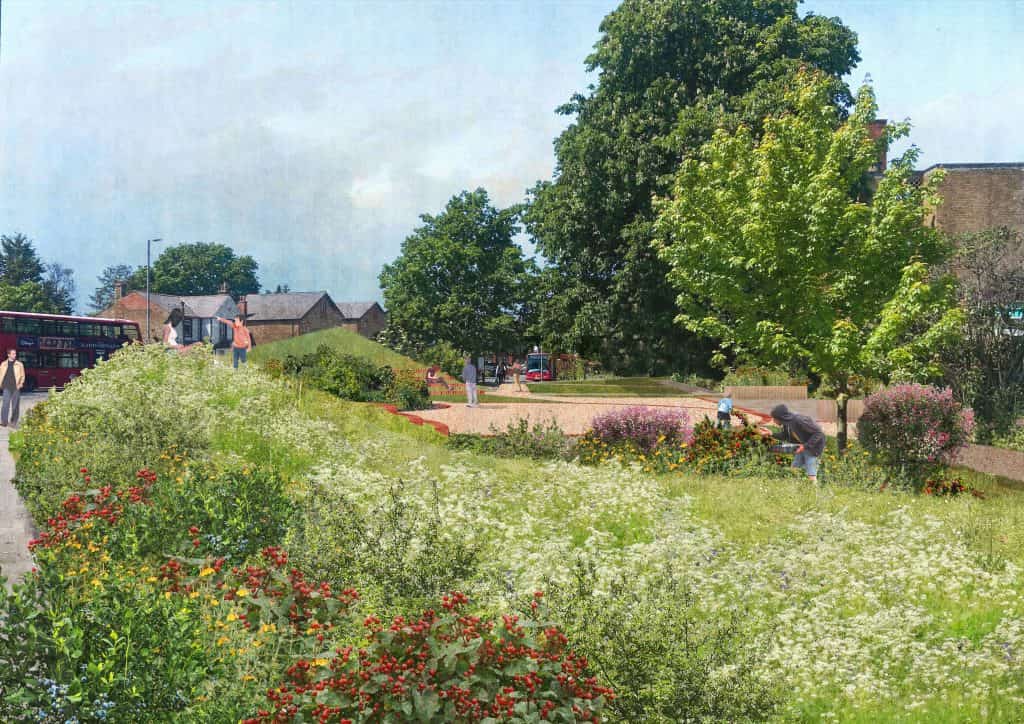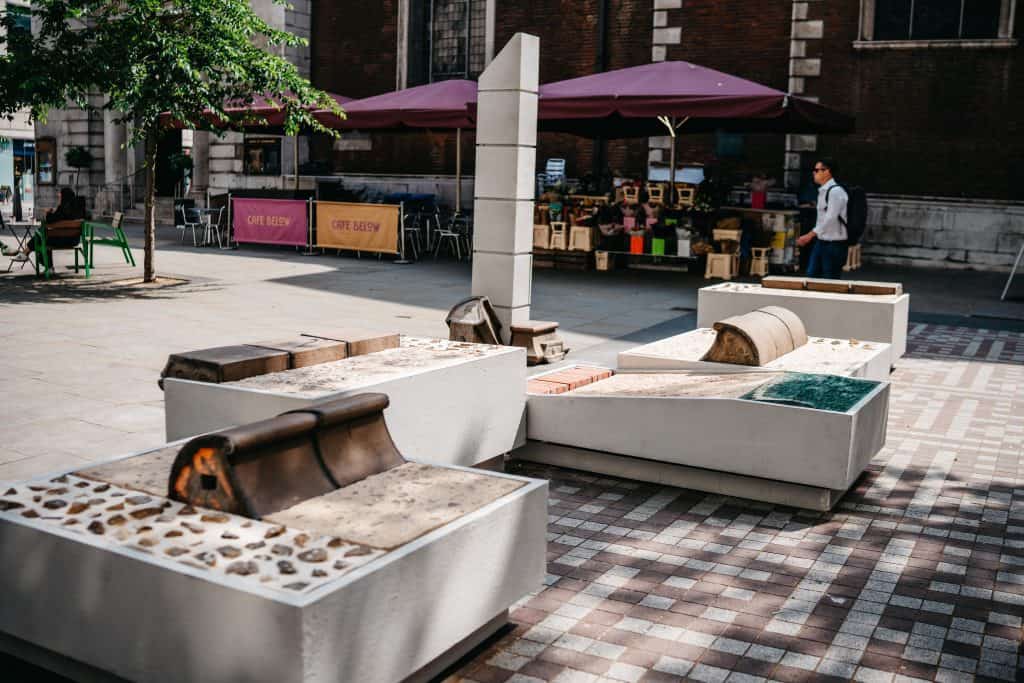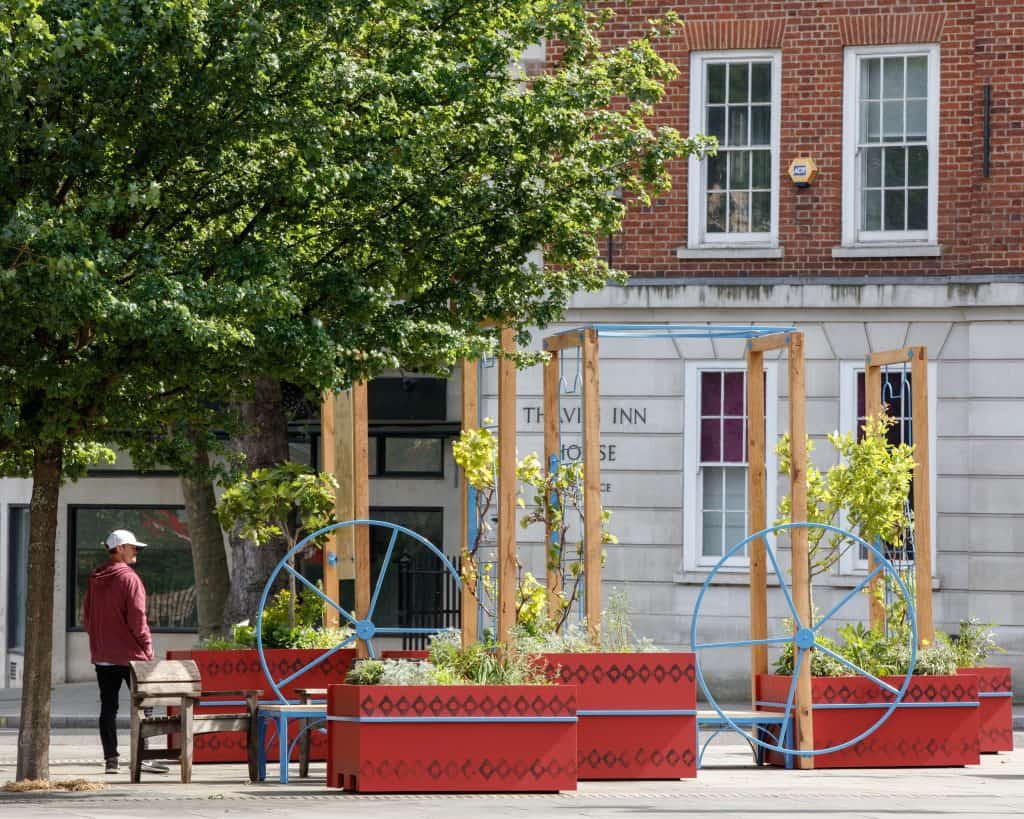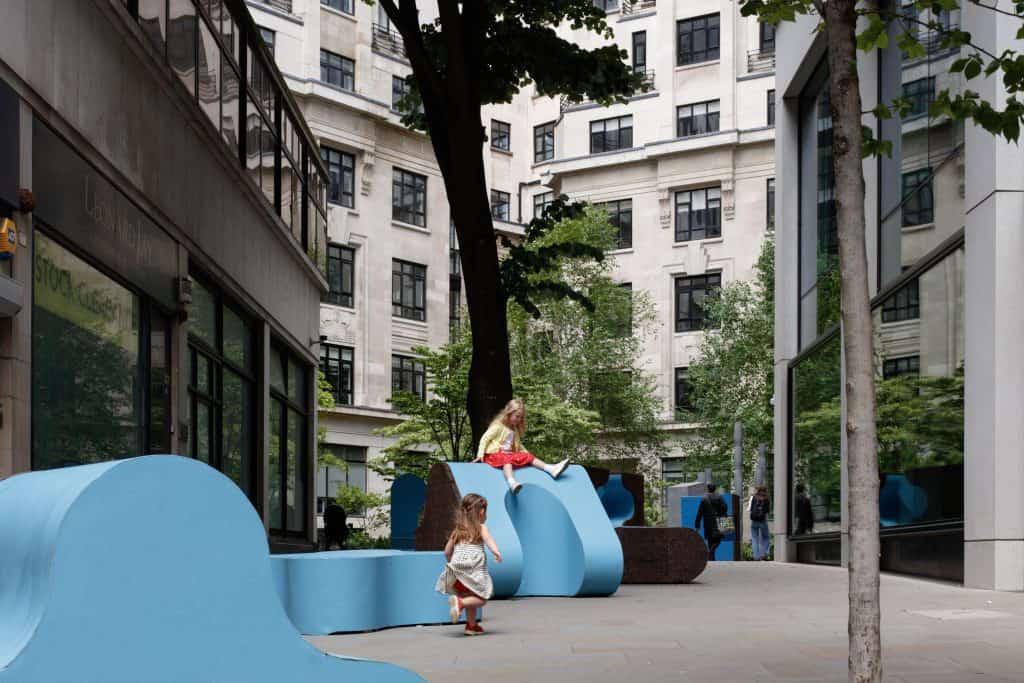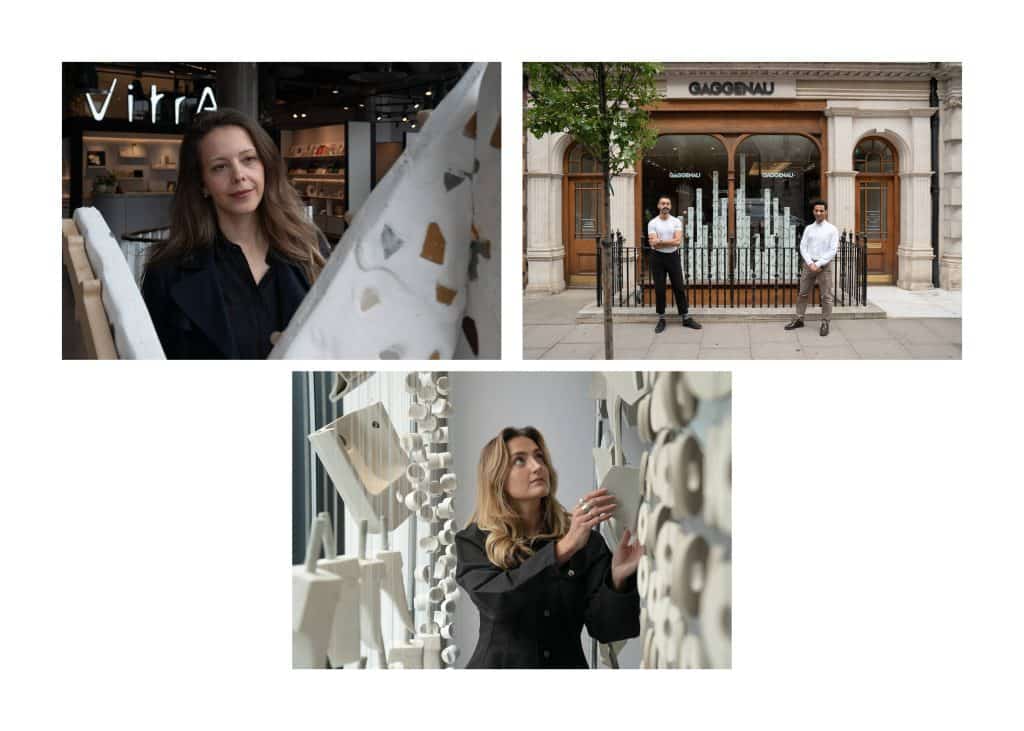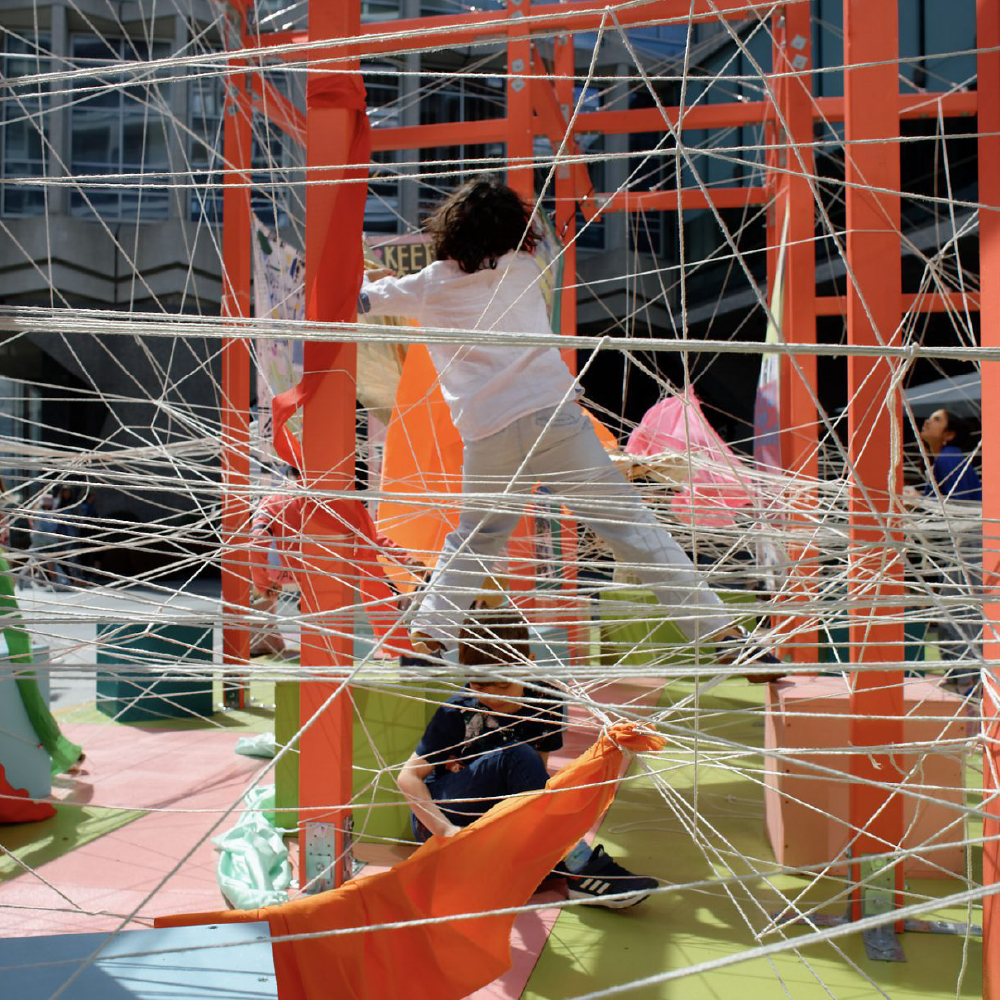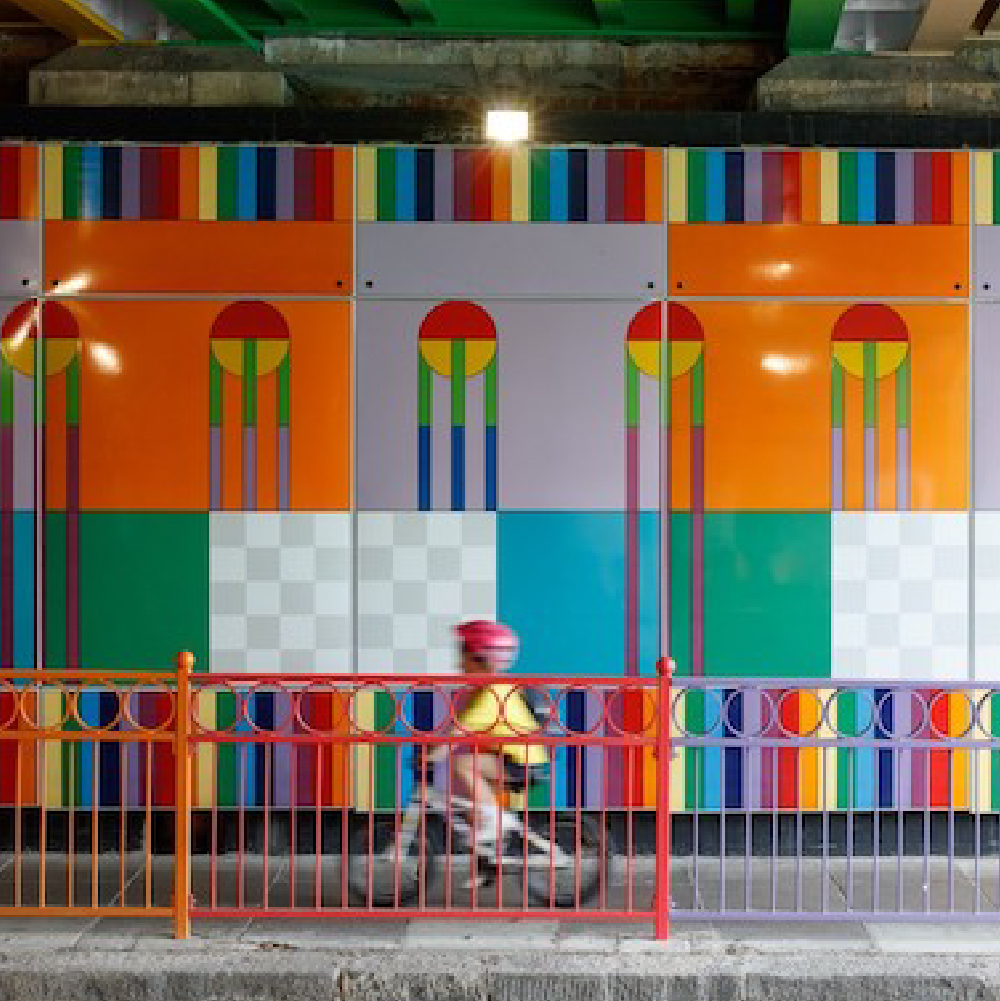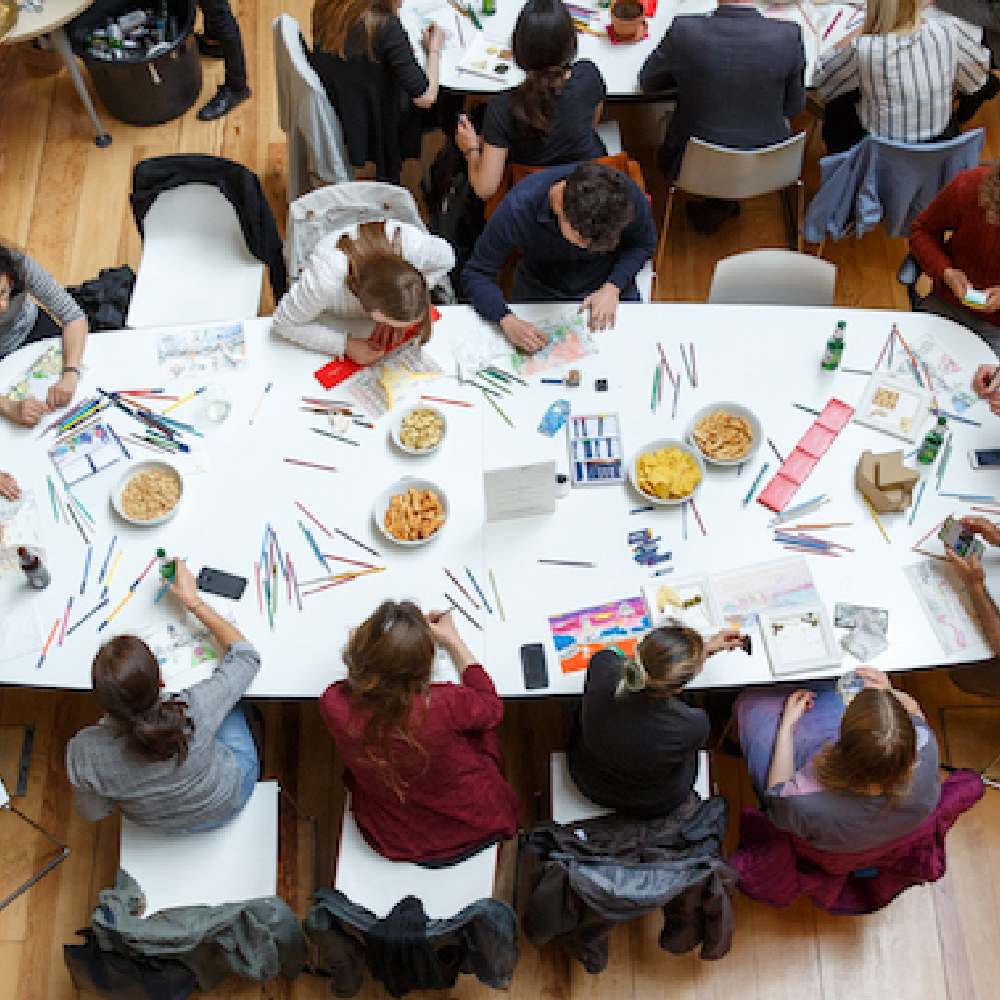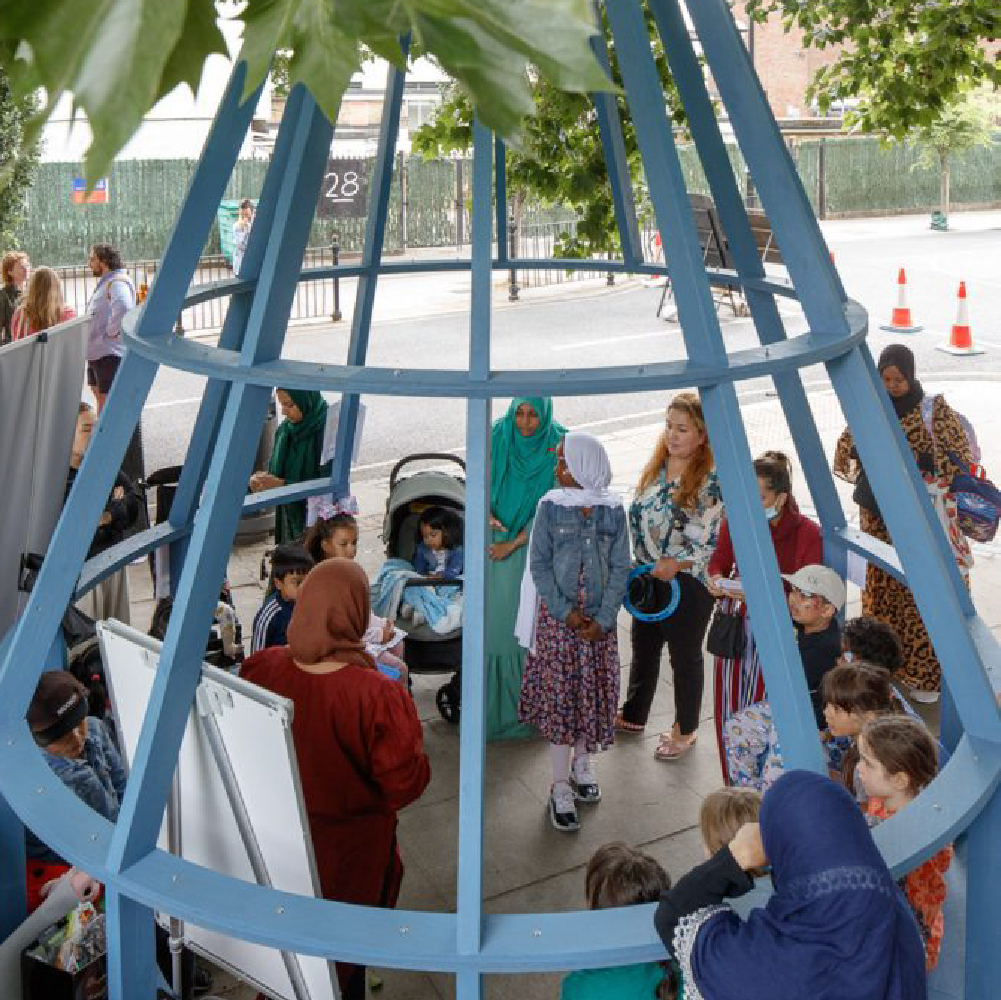On Tuesday evening this week the clouds started to gather over a hot and sticky London, threatening to unleash a torrent on the sweaty capital below but they stayed their hands, much to the delight of visitors to After Image by IF_DO. The atmosphere was perfect for the leafy enclosure outside the Dulwich Picture Gallery with their new structure made up of interlocking timber joints, metal mesh and mirrored panels. The heavy Cumulus and treetops were reflected back to onlookers staring at the pavilion, creating a lower-level sky and placing the art gallery in the clouds. This illusion is just one of the many surprising and joyful moments at After Image. The architects play with your sense of space and perspective as you turn corners around its inside-outside terraces. Children clearly delight in this revelry and adults enjoy the serenity of a lightweight frame that acts more like a garden canopy than a building. I saw Sir Terence Conran enjoying a quiet conversation with architect John Pawson and assembled friends and family.
For this particular soiree, the party was made up of local patrons and artists; it was a private event but one designed for the people that will make most use of the installation. We were welcomed by the new Dulwich Picture Gallery director, Jennifer Scott, who praised the structure by IF_DO as something contemporary, creative and incredibly respectful of the Sir John Soane masterpiece. The gallery was designed in a very specific way to consider how visitors would view art and likewise the pavilion has been created to reorient views to the adjacent building. This level of respect and dialogue work so well together that it’s hard to imagine After Image leaving the gallery. That is the mark of a truly successful temporary structure, to engender a sense of purpose and belonging.
The evening was brought to a close with a performance by local musician-turned-superstar Florence Welch of Florence and the Machine. She admitted it was a great honour to perform on her home turf in front of familiar faces from her past. As the sunlight faded and the music echoed out over the assembled crowd, the installation demonstrated its ability to act as a proper multifunctional summer pavilion, something which seems to have been lost on the more sculptural objet d’art at the Serpentine Gallery. Hopefully this pop-up for aspiring practices will long continue and prove that that big-name architects aren’t necessary for creating inspiring spaces that combine art and architecture.

